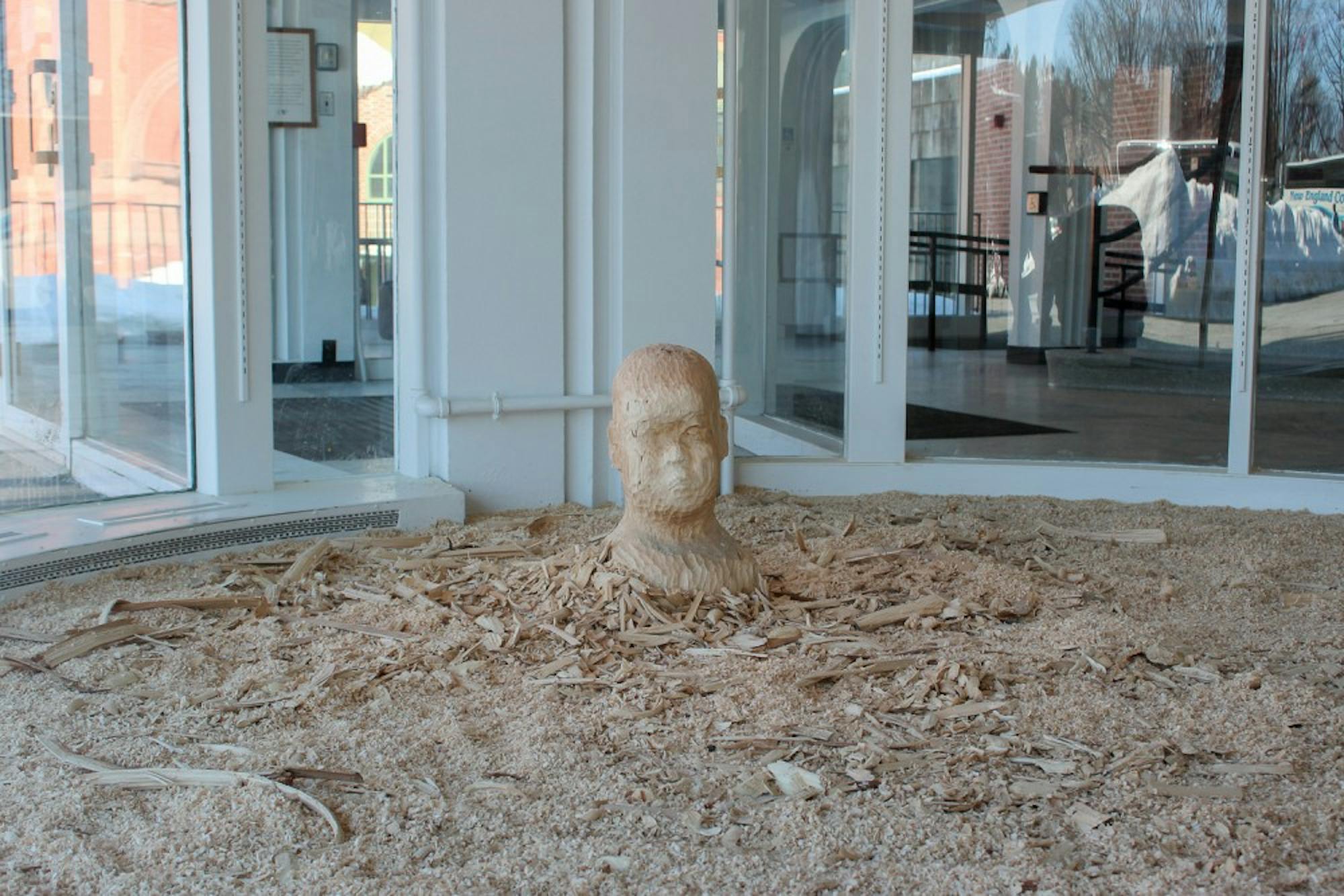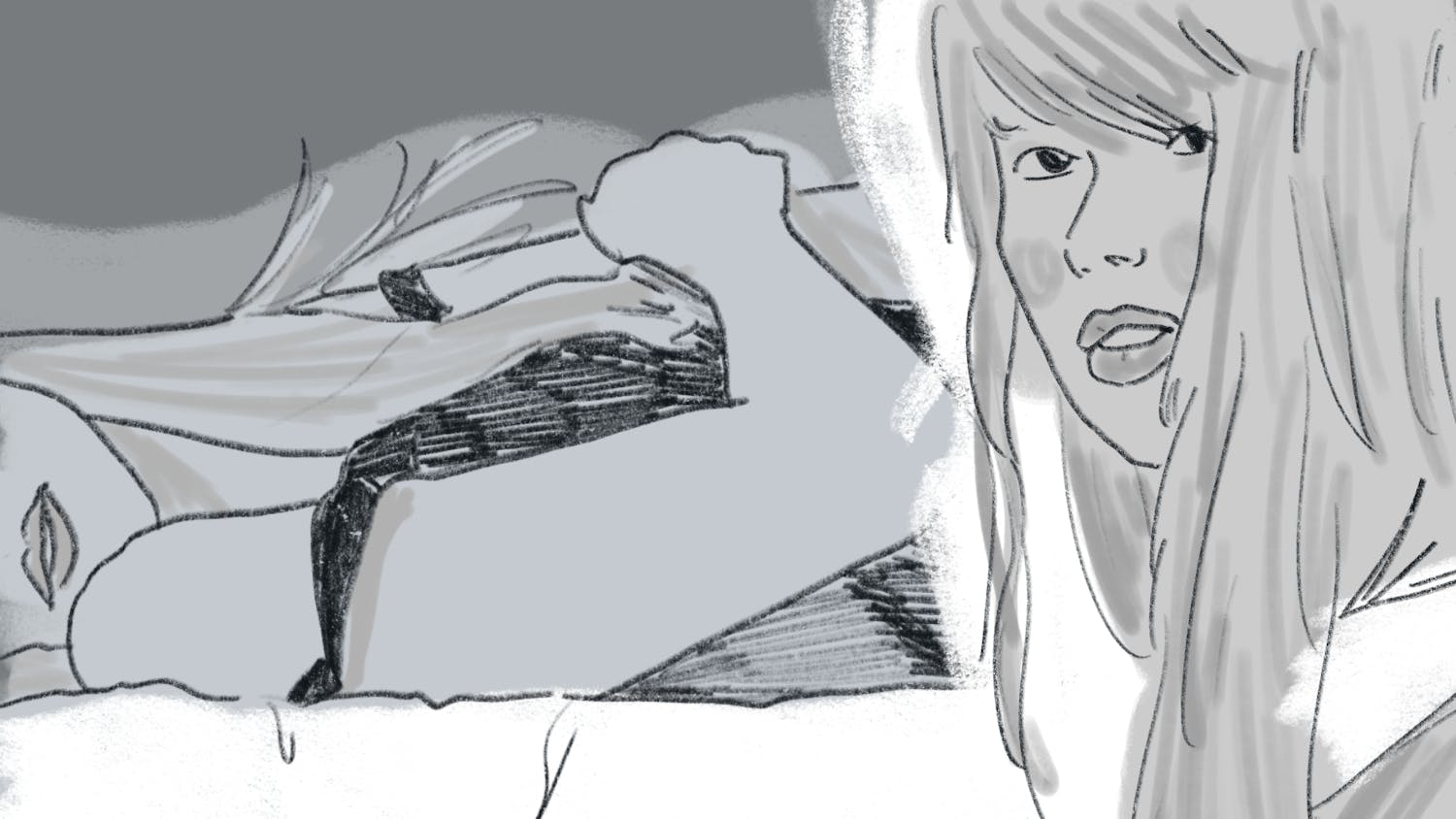Immersed in a pool of wood chips, the bust of a human figure stares out from behind a curved glass wall. “Sculpture,” by Lin Bo ’13, is the newest instillation at the Hopkins Center’s Barrows Rotunda. The title complements the artwork’s simple yet captivating nature.
Bo was selected as one of four interns for the studio art department’s 2013-2014 post-graduate internship program. Studio art interns assist with undergraduate classes and are provided with studio space and a stipend to work on their own projects.
The Barrows Rotunda, the large exhibition case that greets visitors to the Hopkins Center, is a space notorious among studio art interns. Creating artwork that takes full advantage of the space can be daunting. To better fit the space, Bo, who is accustomed to working with oil paints, felt the need for a new medium.
“I was worried about having an exhibition since the beginning of the internship, since I’m a painter and paintings don’t really look good in that space,” Bo said.
Bo began experimenting, first trying plaster and metal before discovering his knack for wood carving. The elm tree that once stood between the Hopkins Center and Wilson Hall inspired him to work with the medium. After the tree fell during fall term, it was sawed into logs and given to the studio art department.
Bo considers himself lucky to have found wood as a new material.
“Even though I’m a painter, I hate oil paint because of the fumes,” Bo said. “I liked having such a simple and natural [medium]. That was an attractive reason to work with wood.”
Exhibition director and studio art professor Jerry Auten noted Bo’s intuitive talent in carving.
“He knew how to best use the material,” Auten said. “The size of the chisel he used, where the crack is, all of those things are orchestrated. While some things were accidental, he kept them and worked around them.”
Bo retained many of the tree’s original features in his piece, as his sculpture pays homage to the elm.
“One message that I hope comes through subconsciously, not necessarily overtly, is sustainability,” Bo said.
Bo managed to dominate the rotunda’s space with quite a small sculpture.
“Lin is letting the large volume of that space exist with that small head,” Auten said. “It’s powerful. It’s like how you feel in a cathedral: there’s so much space. That little head just commands [the rotunda].”
Bo included wood strips and wood shavings carved from the original log in the piece, which he said raises questions about the relationship between the sculpture and what surrounds it. Some parts bend, while others are straight or curl into spirals.
The individual chisel marks on the sculpture, convey the artist’s labor: stripping pieces of wood to reveal the bust underneath. The narrative of Bo’s sculpture, in a way, is the creation of the sculpture itself.
Bo said he stripped the human face down to its essentials to present it in its simplicity. Although gender, race and age are difficult to discern, the form is easily recognizable as human. The lack of specific features prevents viewers from relying on preconceptions to describe the subject of the sculpture.
“I wanted to avoid putting in a specific, adult face, because I would have to make so many choices concerning gender and other things,” Bo said. “There’s a lot of social baggage that comes with those categories. I was trying to make it simple. I minimized how much specificity there is to the face. This project wasn’t about the social part [of art], it was just about transforming the wood.”
Even the expression on the sculpture’s face is plain, Auten said, rendering the viewer unable to discern the enigmatic figure’s inner thoughts.
“It’s not sad, it’s not happy, it’s not him,” Auten said. “While it looks male, it doesn’t necessarily have to be. It’s not precise, but it behaves in light and space like a human face behaves. There’s so much ambiguity.”
Studio art professor John Lee said the work “is tapping into something about us.”
“He’s using the work in order to help us ask questions of ourselves,” Lee said. “There’s definitely a message. The best part is that we get to choose what it is.”




